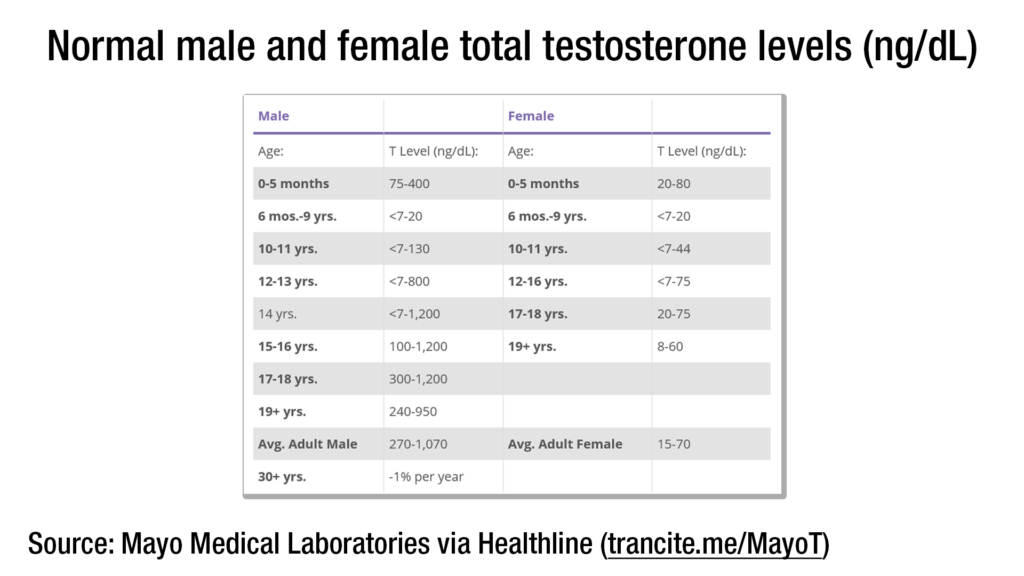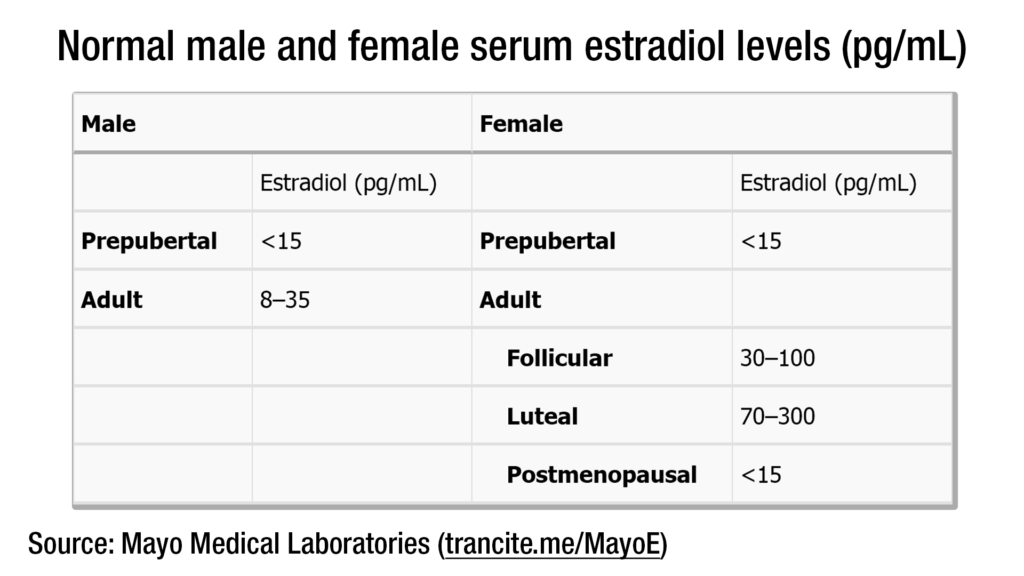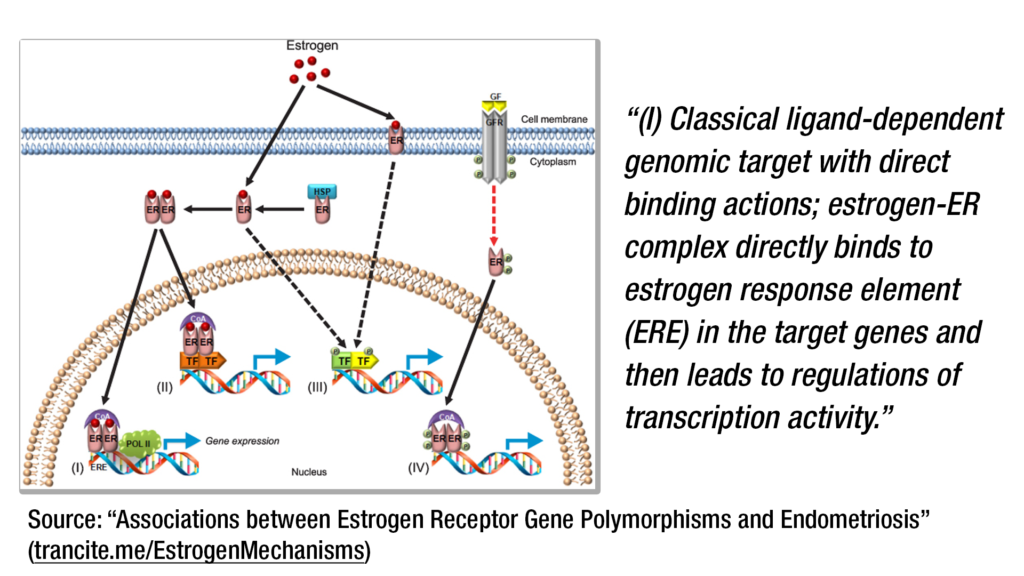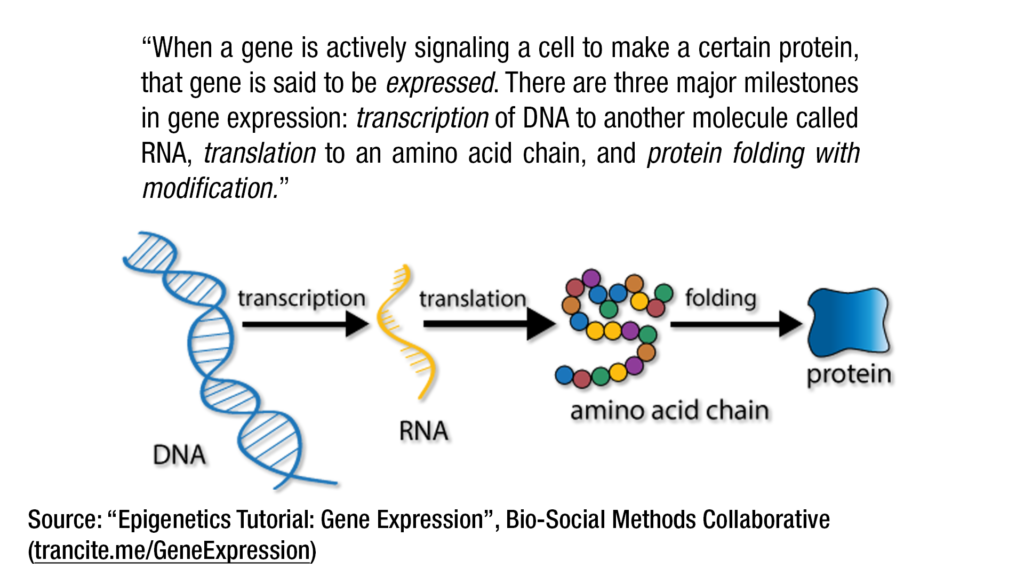Previously: 3 years of HRT, and 8 things I’ve learned
Over the past several years, I’ve heard countless comments which reveal a surprising unawareness of some basic facts of the human endocrine system. In particular, it’s clear that many people don’t entirely understand what estrogen and testosterone actually are, how they work, and their effects on trans people. Not all trans people take hormones, and it’s always a personal choice based on individual needs and preferences. That said, most of us do. Trans people likely already know everything that’ll be covered here, so you can go ahead and skip this episode if you want. Cis people: this one’s for you. Please pay attention.
Every person, man or woman, has various levels of estrogen and testosterone in their body. Men tend to have higher levels of testosterone and lower levels of estrogen, and women tend to have higher levels of estrogen and lower levels of testosterone. Men are not entirely devoid of estrogen, and women are not entirely lacking in testosterone – both are present in everyone. Their presence is not superfluous: having both in some quantity is necessary for the body. Men can actually suffer health issues from having too little estrogen, and so can women from too little testosterone. Some congenital conditions can prevent the body from being able to process testosterone or estrogen, but these are generally rare.
Again: Men and women have both estrogen and testosterone in their bodies, because estrogen and testosterone do things – and they do these things regardless of whether you were assigned male or female. Someone with XY chromosomes can process estrogen in the same way as someone with XX chromosomes. Someone with XX chromosomes can process testosterone in the same way as someone with XY chromosomes. The action of hormones in the body is not inhibited by sex chromosomes.
Like most biological processes, the details of how hormones work are pretty complex. You could quite literally spend a lifetime studying this in depth. But at a basic level, estrogen binds to estrogen receptors, which activate estrogen response elements. These response elements alter the transcription and expression of a person’s pre-existing genes.
The changes in expression regulate the production and action of various proteins, which produce the large-scale biological effects of estrogen.
This all sounds pretty abstract, involving a lot of things that you can’t easily see. Here are some things you can see:

This is an estrogen pill. Specifically, this is 17β-estradiol. It is identical to the most potent form of estrogen already found in the body. To repeat: It is full of molecules that are the same as the estradiol molecules that already exist in the human body. That means when I take this pill, it acts in the same way as the estrogen that the body itself produces. It binds to estrogen receptors, alters gene expression, and regulates proteins – and now, I have a lot more estrogen than I ever had naturally. I take 120 of these pills every month, and I’ve been taking them for nearly four years.
Here’s what that looks like in a tangible way: I didn’t have breasts before, but now I do. They are not implants – they are breast tissue that I grew myself. My facial features weren’t this soft before, but now they are. My skin wasn’t this smooth before – now it is. My legs used to be hairy, and now they’re not that hairy at all. My muscle mass has decreased significantly, and I have a female-typical distribution of fat deposits. This is most noticeable around the butt and thighs, but it’s also changed in more subtle ways that have made women’s clothes fit much better than before. I’ve experienced extensive genital shrinkage and testicular atrophy, along with a lack of spontaneous erections and a very reduced volume of ejaculate.
There’s more, but those are the parts that physically stand out the most. Estrogen can be delivered in other forms, such as injections or patches, and trans women often take other medications to reduce their levels of testosterone as well, but this is basically how the process works. Trans men take testosterone when hormonally transitioning, which has similar mechanisms of action in the body but binds to androgen receptors, producing male-typical sexual characteristics.
This is important, so listen closely: Barring certain conditions, everyone has estrogen receptors and androgen receptors. Everyone has cells capable of responding to estrogen and testosterone. Everyone’s DNA contains the genes needed to produce physical feminization or masculinization. Men, if you were to take these estrogen pills regularly over several weeks, months, or years, you would see changes similar to the ones I’ve experienced. Your body can do that. Your cells have the receptors for it. Your genes already contain the code necessary for the development of breasts, like mine, and all these other features. All of the biological pathways involved are right there, inside of you.
That is why taking hormones works. We’re not doing it just for fun, although it is. We’re not doing it just to piss people off, although it does. Hormones actually do something and produce real physical effects. It doesn’t matter whether you have XX or XY chromosomes – my XY chromosomes obviously haven’t stopped all these estrogen molecules. It’s not like the pills just bounce off. Altogether, this is an elegant process, and on a high level, it’s not even that complicated. It’s just activating a system that’s already in place, and maintaining this state.
If this has been a little repetitive, it’s because it needs to be – it’s astounding how many people will blithely tell me this is a matter of “high school biology”, before I have to correct them on basic points of endocrinology. Please, pay attention to what I’ve said, and incorporate this into your understanding of reality. ■








Pingback: Fractals, not pyramids: Why “8th grade biology” isn’t enough | Gender Analysis
Pingback: Trans men and transmasculine people on testosterone can grow prostate tissue | Gender Analysis